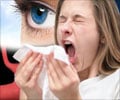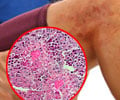The study was conducted by a team of researchers led by Dr Peter Burney at the National Heart and Lung Institute.
As part of the study, researchers analysed schoolchildren who were five to 10-years-old in the Greenwich area of London.Researchers asked their parents about their kid’s fruit consumption and whether they had any asthma symptoms.
The study found that although there was no connection between apple juice intake and a reduced possibility of an actual asthma diagnosis, there was a strong link wheezing and drinking the juice.
Researchers found that kids who took apple juice at least once daily were half as likely to experience wheezing as compared to those drinking it less than once a month.
Though wheezing does not necessarily lead to asthma, it is still a key sign which shows that a child is at an increased risk of the disorder.
The apple juice involved did not have to be fresh apple juice - long-life juices made from concentrate were also effective.
Advertisement
'Further studies are needed to confirm the protective effects of apple juice from concentrate and bananas,' the BBC quoted Burney, as saying.
Advertisement
Earlier a research at University of Aberdeen found that women who ate lot of apples while they are expecting mums might protect their unborn babies against asthma later on in life.
'There is some evidence that a healthy diet rich in anti-oxidants and vitamins is good for asthma. It is yet another reason why we should be encouraging a healthy diet,' Thomas said.
The findings of the study were published in the European Respiratory Journal.
Source-ANI
LIN/M











